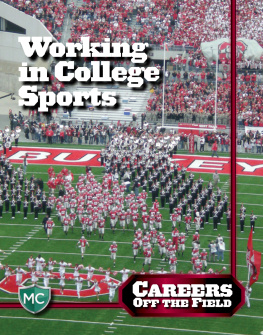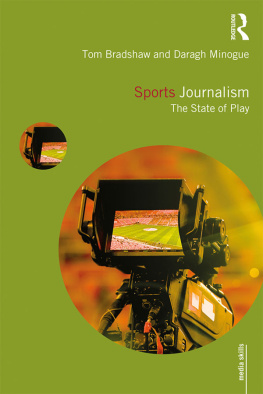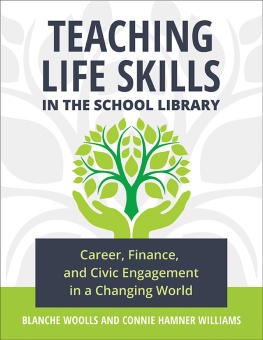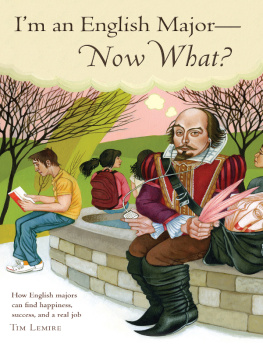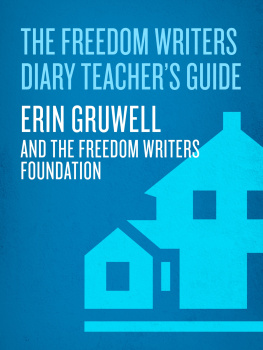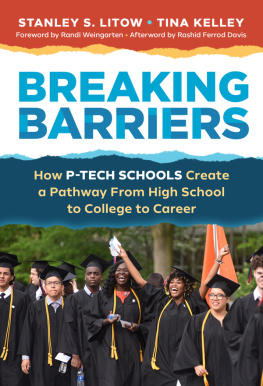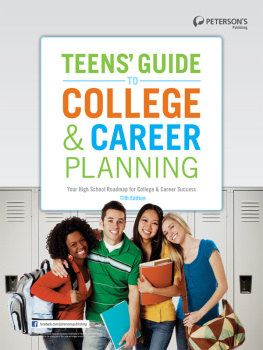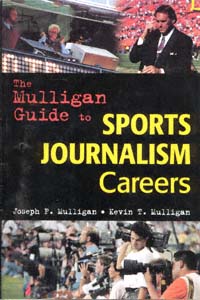We offer to read an annotation, description, summary or preface (depends on what the author of the book "The Mulligan Guide to Sports Journalism Careers" wrote himself). If you haven't found the necessary information about the book — write in the comments, we will try to find it.
WHO THIS BOOK IS FOR - An obvious audience is the university, graduate school, and high school student with the love of writing, because The Mulligan Guide enables young writers, interns, and novices to learn how and where to channel their journalistic talent to one of the many major sports businesses that need good writers. It explains, chapter by chapter, the top fifteen sports career fields in which the skills and intelligence of a writer are vital to the business success of a publication, product, or service. Therefore, college English, Communications, Journalism, RTVJ majors, career offices and seminars, and college and high school libraries use its 315 pages plus full Index for a comprehensive career reference and how-to text. Its written for: Students (high school & college) Journalism teachers Communications teachers RTVJ teachers Sports management teachers/students Young Writers Experienced Writers (in non-sports fields) Journalists Sports fans Sports Journalists Sports Editors Copy editors Public Relations writers New Media writers Photojournalists (videographers, camerapersons) Media Relations writers or SIDs Advertising or Marketing writers Radio & TV writers Sports Business writers Freelance writers WHY TEACHERS, STUDENTS, PROFESSIONAL JOURNALISTS, AND SPORTS FANS ARE PRAISING IT Experienced professionals writing in other fields who enjoy the excitement of sports finds The Mulligan Guide an essential guide for examining alternatives to the writing positions they now hold in and out of sports. The education and skills required for each field are fully explained, as well as how to find employment, what it takes to succeed and make a good living in each. Read how the superstars in the business achieved their success, and their advice and recommendations for the newcomer. Sports fans love to hear the internal workings of the sports journalism world because insider stories about the journalists way of life; their pet peeves and favorite player anecdotes make for a fascinating read. Sports journalists love to read about their colleagues and how their own personal writing or editing situation and environment compares with others around the country. Thats why we have so many interviews from all parts and corners of the country; so you can see what your peers are accomplishing and get some new ideas. The Mulligans tapped a wide ranging mix of veteran career pros, as well as newcomers who provided an unusual slant and honest appraisals of life near the lower rungs of the sports journalism ladders. Youll read the stories and advice of John Rawlings, Editor of The Sporting News, Armen Keteyian, CBS and HBO sportscaster, Joe Paterno, Penn State football coach, Bill Carter, business/TV writer for The New York Times, Harvey Greene PR director of the Miami Dolphins, John Calipari, recent head coach of the New Jersey Nets, as well as college interns and just-getting- started reporters. WHY THIS BOOK IS UNIQUE There are, of course, numerous books on the shelves covering the subject of journalism careers and sportswriting. They concentrate, however, almost exclusively on either a) general, non-sports journalism or b) if they are sports oriented, almost always on newspaper careers. Sportswriting books, then, are either about newspaper careers or are anthologies of the published works of accomplished sports reporters. Others focus in an instructional way on training for the newspaper business. None, however, have The Mulligan Guide focus on all of the other fields in which you can write or edit your way to sports enjoyment and income. The Mulligan Guide contains a candid, no-punches-pulled analysis of both the favorable and prejudicial aspects that work for and against all writers, including women and minority groups. WHAT IT CONTAINS The outline of The Mulligan Guide to Sports Journalism Careers: Chapter 1 -Welcome to the Wide, Wide World of Writing About Sports Journalism Chapter 2 -Newspaper Sports Writing Chapter 3 -Sports Copy Editing Chapter 4 -Careers As Sports Editors Chapter 5 -Investigative Reporting Chapter 6 -Magazine Sportswriting Chapter 7 -Sports Media Relations in Colleges and Universities Chapter 8 -Sports Advertising and Marketing Chapter 9 -Sports Public Relations Chapter 10 -Radio Sports Journalism Chapter 11 -Television Sports Journalism Chapter 12 - Photojournalism in Sports Chapter 13 -Writing About Sports Business Chapter 14 -New Media Sportswriting Chapter 15 -Freelance Sportswriting Bibliography Appendix Index BRIEF CHAPTER SUMMARIES: Chapter 1 -Welcome to the Wide, Wide World of Writing About Sports Journalism In addition to introducing the books structure, Chapter 1 examines the fundamentals of sports journalism and the scope of career paths that writers new to the business of sportswriting must understand. It defines sports journalism and its educational aspects and explores the general concept of internships and how they established a network of journalistic contacts that are vital in career planning. Chapter 2 -Newspaper Sportswriting This chapter explains the various levels and positions of the newspaper sports business, including the wire services. Readers learn how to get started during and after college by working on the small town daily and, through the stories and advice of both newcomers and veterans pros, how to develop your skills and progress into a position as a big city daily beat reporter or columnist. The major differences in newspaper circulation levels are discussed-- including salary, workload, pressures, etc.. Experienced reporters, via their experiences and anecdotes, give valuable guidance on the importance of a broad education, the demands of the profession, and how to make it in this very competitive field. Chapter 3 - Sports Copy Editing The emphasis of this chapter is on the importance of the copy editor in the various sports journalism fields. Although in some of of journalism fields there may not be a well defined position or person called editor, in one way or other, there is an editing function necessary for the quality of the final written material. The chapter examines the knowledge and skills required of a copy editor, because in addition to English grammar and writing, he or she must possess excellent people skills to deal with the egos of sports journalists and the pressures of newspaper deadlines. Chapter 4 -Careers As Sports Editors This chapter examines one of the most important positions in the journalism world, the Sports Editor. with its special aptitudes and talents. Only a select few sports writers, columnists, and editors rise to this top position on newspapers, magazines, and other sports publications. With the help of some of the top men and women Sports Editors, we explore why they usually draws the highest income in the business and what it is that makes her or him so valuable to the company. Chapter 5 -Investigative Reporting Using the exciting and unusual stories of some of the best in this business, this chapter analyzes the unique challenges, demands, and risks of investigative sports reporting through the eyes and minds of some of the nations best investigative reporters. We examine the reasons why they prefer to specialize in the special, but fascinating challenges of this little understood profession. Because investigative sports reporting has become a major beat at many major dailies, and good writers are in demand, we consider the special prerequisites and attitudes that sports editors look for in candidates. Chapter 6 -Magazine Sportswriting Emphasis of this chapter is on the challenge of writing for a national audience in dozens of glossy periodicals such as Sports Illustrated, Baseball, Hoop, or Golf Digest. Well examine in detail, for example, the differences between writing for these markets and all other sports publications. Through the eyes of well-known magazine writers, we will also contrast the different writing styles, technical requirements, and abilities necessary to make it in the magazine business. This chapter looks at the world of opportunities available because of the flourishing business of specialty sport magazines. Today, magazine racks are bulging with a proliferation of special interest periodicals with surprisingly large circulations. There are top quality monthlies for skiers, snowboarders, golfers, cyclists, bikers, tennis enthusiasts, golfers, and bowlers, to name just a few. The career paths of well-known sports magazine authors, many of whom began in other journalistic jobs, will be charted, with the focus on what prompted them to leave one media for another and what they found when they made the jump. Chapter 7 -Sports Media Relations in Colleges and Universities This chapter analyzes the variety of talents and knowledge that Sports Media Relations writers (aka: sports information director or SID) must possess and what it takes to enter this exciting field of sports journalism in intercollegiate athletics. It explains the versatile skills and techniques the SID employs to ensure maximum public relations success for their school or organization. Readers will learn why the field of sports media relations is not for the faint hearted writer. Although interesting and exciting, it is also a very demanding career choice. Our interviews with many sports information experts will provide the reader with stories, experiences, and career advice to help them decide if this field is the right one for them. They will hear from some of the best in the business, including a Hall of Famer from the Collegiate Sports Information Directors of America, and Directors for Media Relations at many large and small universities. Chapter 8 -Sports Advertising and Marketing This chapter explores the growing writers field of marketing and advertising in sports of every kind. It covers the many marketable objects, people, events, and services connected with dozens of types of sports, even beyond the ordinary professional team sports of basketball, football, baseball, and hockey. We explain why writers have found these related fields to be the most financially rewarding for a journalist with a talent for selling with words all the sports world can offer, from superstars to baseball cards. This chapter offers the dos & donts a writer should be concerned with and anecdotes about personalities our experts have worked with, for, and around. Finally, we examine Success....what defines it in marketing and in advertising and what it takes to be among the best at this field. Chapter 9 -Sports Public Relations This chapter first focuses on why men and women sports journalists choose Public Relations over other sports-related professions and what stepping stones one encounters on the way. We study the specific skills and education required for entry and the normal progression path to the upper organizational levels of marketing and advertising of sports. Through extensive interviews with some of the top names in the business, we learn what life is like as a pro teams PR director including writing and editing publications and other duties that come with the territory. Chapter 10 -Radio Sports Journalism An often overlooked field of sports writing is that of the radio newsman/reporter/ commentator who must first write and rewrite his or her copy and promotional spots, commentaries, and news reports before reading them over the air to his audience. Radio news writing, youll find, presents a unique opportunity for the prospective sports-minded writer who may not be interested in writing long articles or writing for a daily newspaper, but rather is well qualified to verbally use his writing and voice to report on sports. Chapter 11-Television Sports Journalism While writing radio sports news and television sports news are similar in some ways, there are significant differences which will be detailed in this chapter. It will explore the all-important process of writing to fit the limited time allowed and the video being shown to viewers on the television screen. More than people realize, television is first a written medium before it becomes a visual one, and through interviews and first-hand newsroom accessibility, the reader will leave this chapter with a well-rounded picture of life as a TV sports newscaster, producer or behind-the-scenes reporter. Experts in the business explain how to get your start in television and what it takes to succeed. Chapter 12-Photojournalism in Sports The average sports fan is often fascinated by the skillful still and video camera work they see in sports communications. Very few know that their visual enjoyment resulted from a wide range of skills and the knowledge of the experienced photojournalist in addition to his or her obvious expertise with a camera lens. In this chapter, we examine the work of the photojournalist and how to communicate via photography. Journalists considering this fascinating field are introduced to the techniques and styles of sports photography for all of the visual forms of sports journalism explored in this book: newspapers, magazines, public relations, advertising, and television. Chapter 13- Writing About Sports Business Modern fans know that sports is not only fun; its a business! This chapter studies this unique writing career field and how its technology differs from conventional sportswriting. We examine this new profession that has spawned radio programs, Internet Web sites, and university curricula dedicated entirely to Sports Business and Sports Law. This chapter answers the questions that journalists must ask when they consider this new and fascinating field of sports journalism. Chapter 14- New Media Sportswriting Millions of Americans are getting much of their sports news electronically and on-line in a variety of ways. New students and experienced sports communicators must come to grips with this reality and become skilled in its ways, or they may find themselves on an off-ramp of the Information Superhighway, rather than part of the traffic flow. Using the expertise of the pioneers of this new technology, this Chapter provides readers with the preparation and know-how to become one of the new breeds of writer, the Cyberjournalist, and succeed at it. It describes the new tools and career field of the sports journalist and how to adapt writing styles to its needs. Included will be samples of major sports Websites and how they are developed, anecdotes on the beginnings of this new field, and a detailed peek at what the future may hold for those who take the plunge. Chapter 15- Freelance Sports Writing In this chapter we explore freelance writing, both as a career and as a part time activity. We examine what the young sports writer needs to know about becoming an independent freelancer or how he or she can use this wide ranging field as a way to make extra income. Learn how to introduce your writing skills to editors of sports magazines, newspapers, etc.. If they like your work, it could be the beginning of regular paid assignments. Being your own boss, selecting your own story lines, and choosing which publications to write for sounds good at first glance. This chapter, however, will examine the pitfalls of putting all of your chips on freelancing, until you are sure of your ability to succeed. Practicing, published freelance writers describe the thrill of receiving their first acceptance letter and seeing their first bylined story published. They explain what its like to endure a long string of rejection letters from editors and how to rebound from them with a positive attitude.



